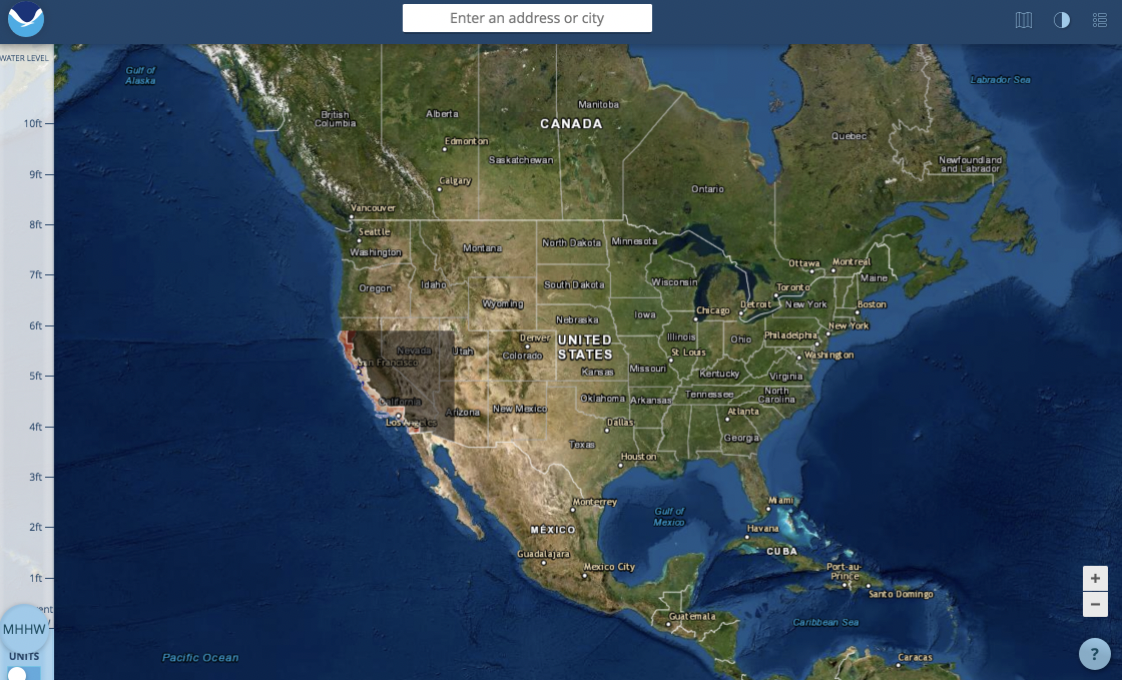Teach This Poem, though developed with a classroom in mind, can be easily adapted for remote-learning, hybrid-learning models, or in-person classes. Please see our suggestions for how to adapt this lesson for remote or blended learning. We have also noted suggestions when applicable and will continue to add to these suggestions online.
(Teachers, you may want to read the poem first and make sure its language is appropriate for your students.)

Use this interactive tool to see how sea rise might impact the United States.
The following activities and questions are designed to help your students use their noticing skills to move through the poem and develop their thinking about its meaning with confidence, using what they’ve noticed as evidence for their interpretations. Read more about the framework upon which these activities are based.
-
Warm-up: Read the epigraph for “Insomniami,” “The neon burns a hole in the night / and the Freon burns a hole in the sky / —Dessa.” What words or phrases stand out to you? What do you notice about these words or phrases? (Teachers, you may wish to listen to the song “Kites” by Dessa or show students the lyrics.)
-
Before Reading the Poem: Use this interactive tool to see how sea rise might impact the United States. Feel free to look at both the entire map and zoom in to your town or state. Discuss what you notice with a partner.
-
Reading the Poem: Read the poem “Insomniami” by Ariel Francisco silently. What do you notice about the poem? Annotate for any words or phrases that stand out to you or any questions you might have.
-
Listening to the Poem (enlist two volunteers to read the poem aloud): Listen as the poem is read aloud twice, and write down any additional words and phrases that stand out to you. Or, you may opt to listen to the poet read the poem aloud.
-
Small-group Discussion: Share what you noticed in the poem with a small group of students. Based on the details you just shared with your small group and your activities from the beginning of class, what is the speaker’s relationship to place? How might this place be changing? How does this relate to where you live?
-
Whole-class Discussion: What might be the significance of the title “Insomniami?” What is troubling the speaker? How do the stanzas and asterisks impact your reading of the poem?
-
Extension for Grades 7-8: Read the “About this Poem” section. Think back to the map that you viewed at the beginning of class. Write a poem that expresses how you feel about climate change and where you live.
-
Extension for Grades 9-12: “Insomniami” won the Treehouse Climate Action Poem Prize. Read more of the winning poems and choose one additional resource to research. In a class discussion, share what you learned and brainstorm ways that your school could fight climate change. (Teachers, this Climate Change & Ecological Grief resource from Facing History and Ourselves might help offer some useful tips.)
“Finally, there can be a singular bravery to a poem. When a poem works—when a poem brings everything together—it can be thrilling, inspiring, and deeply beautiful. We need that now, that courage, that beauty, that inspiration.” Read an interview with Treehouse Investments on poetry’s role in combating climate change.
This week’s poetic term is lullaby, or a song or folk poem meant to help someone fall asleep.
